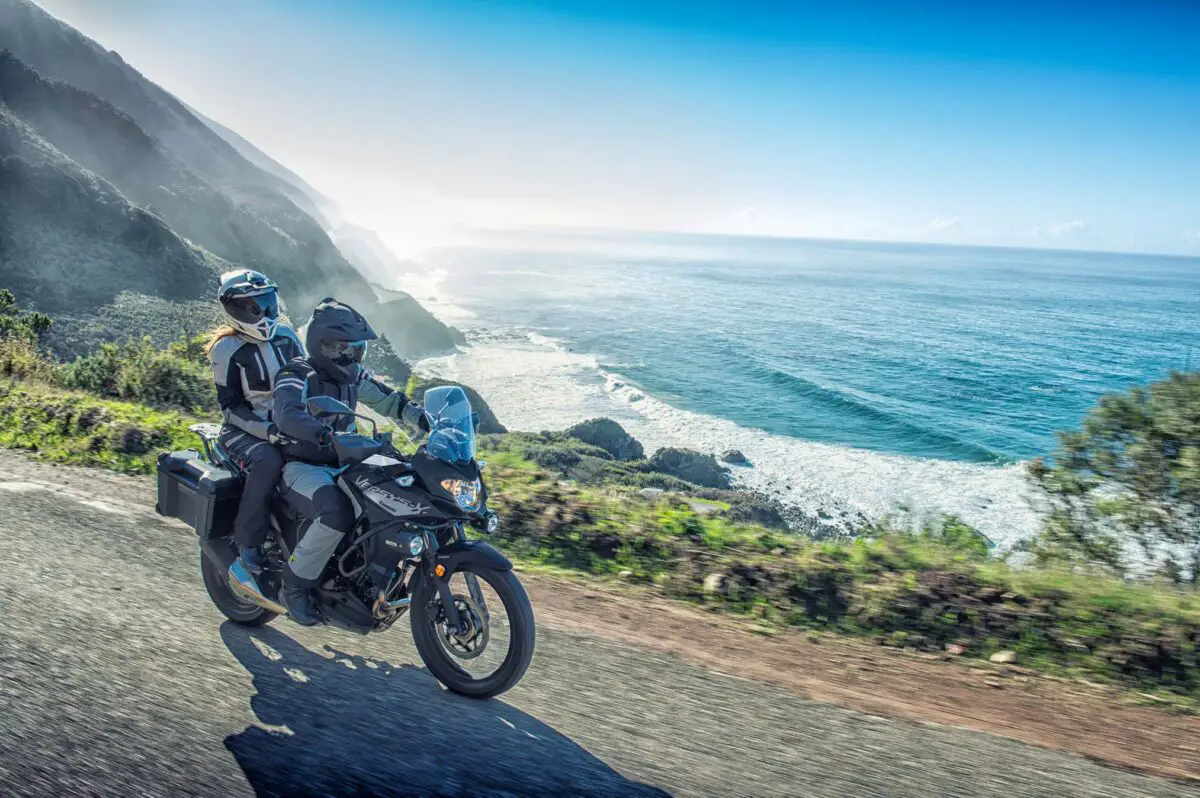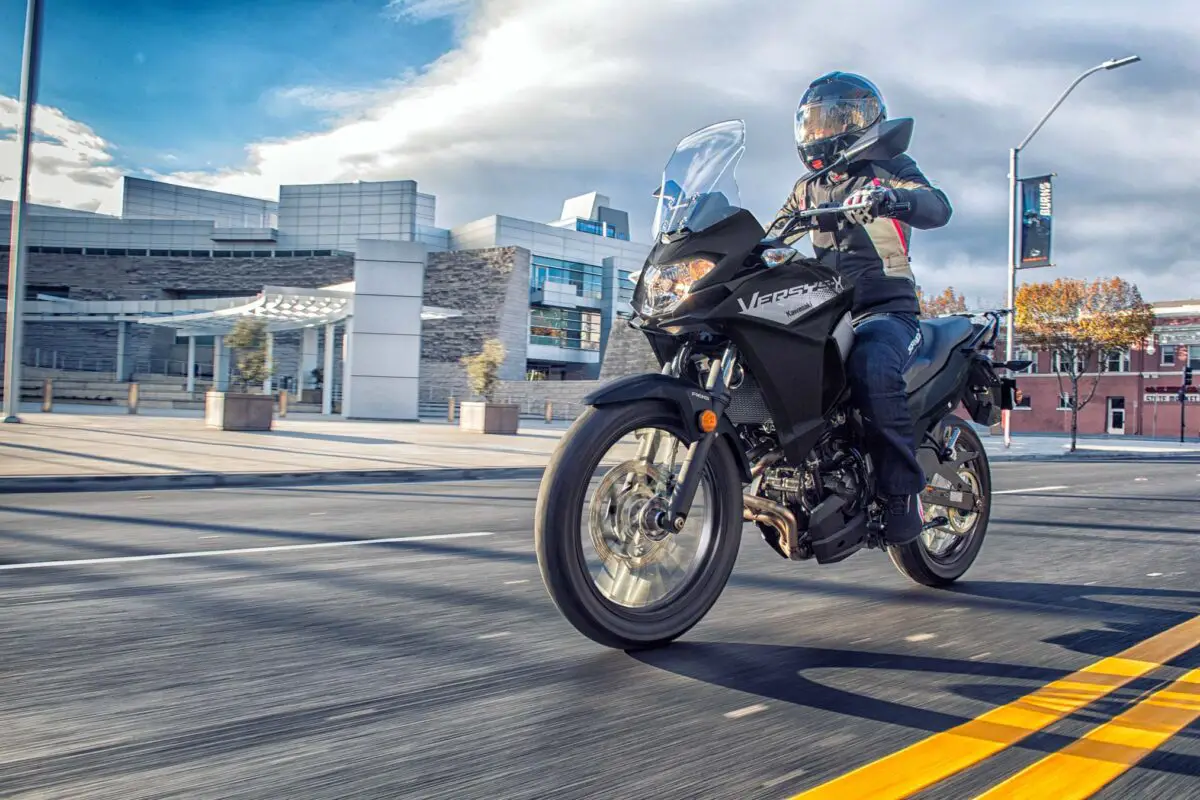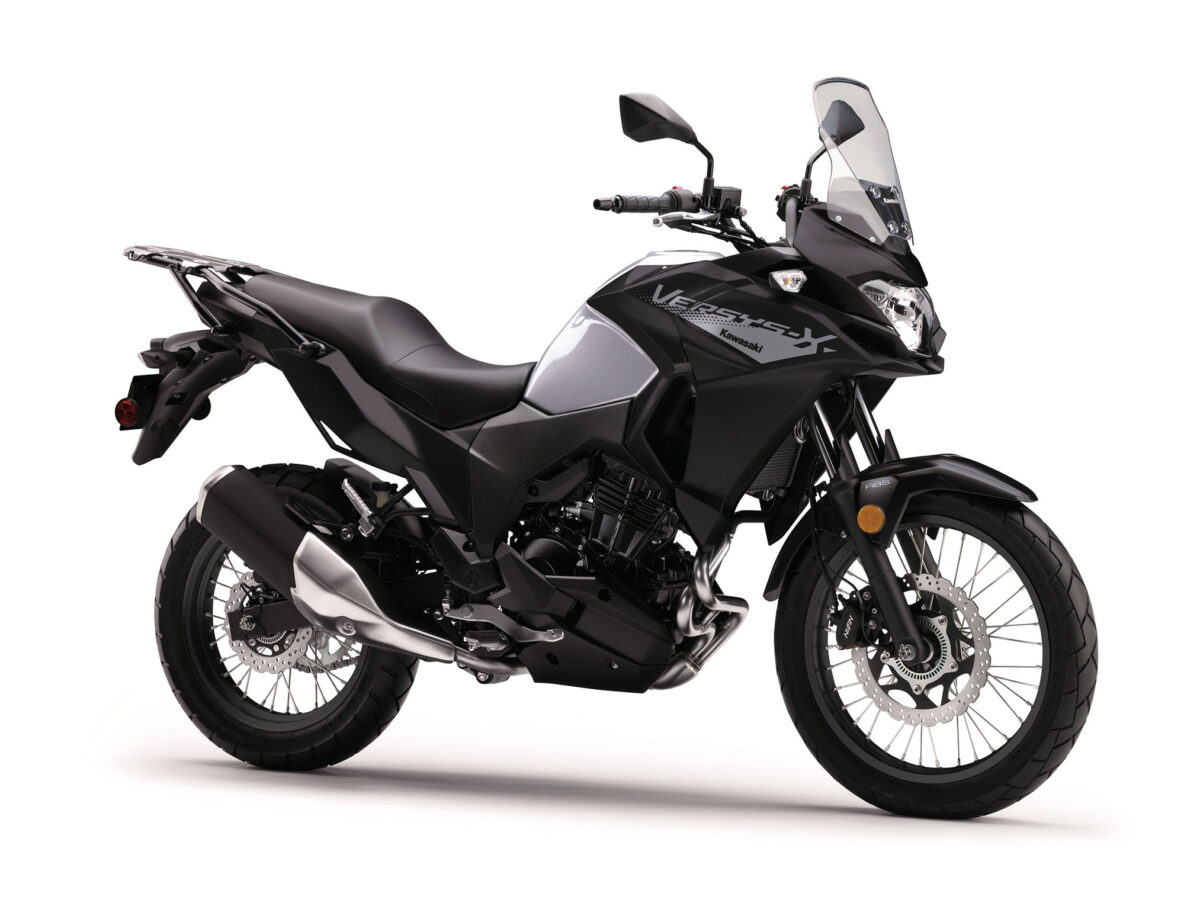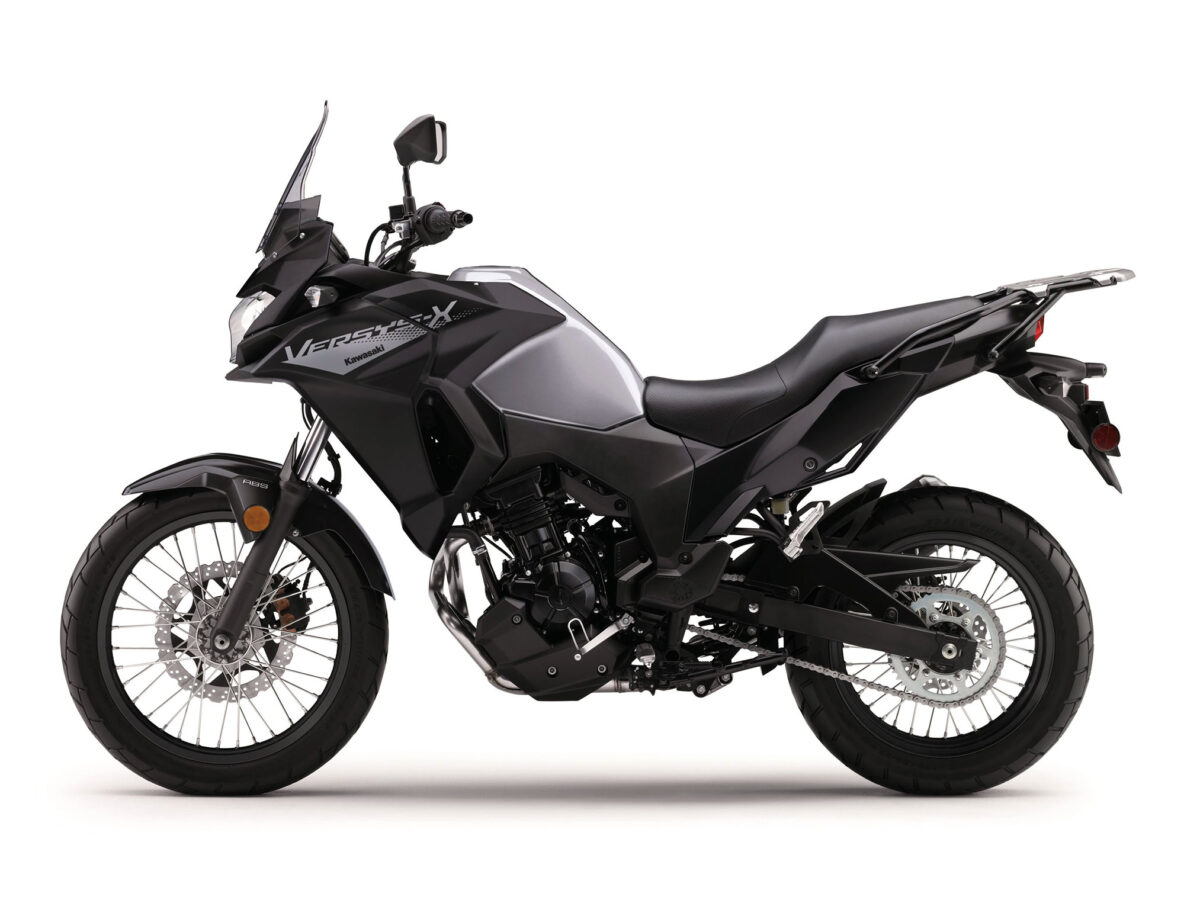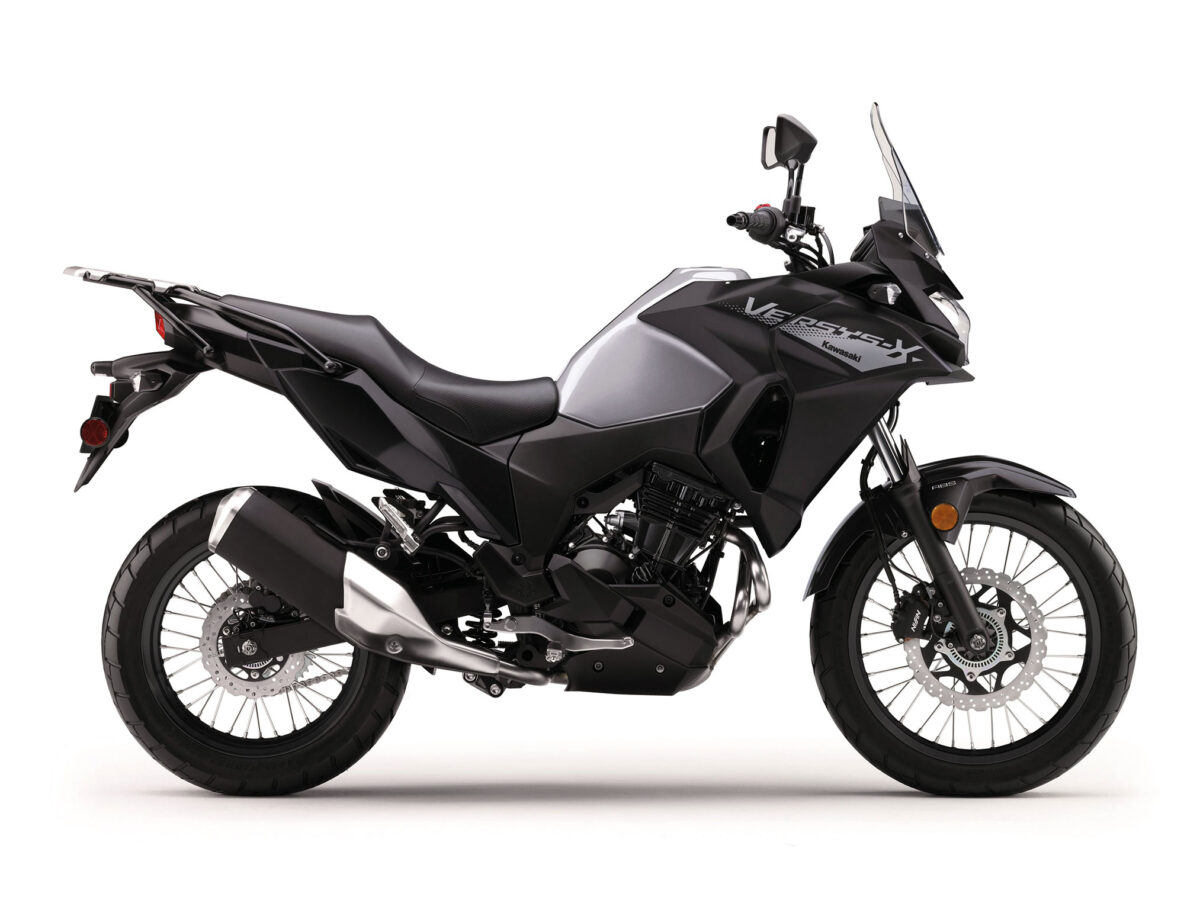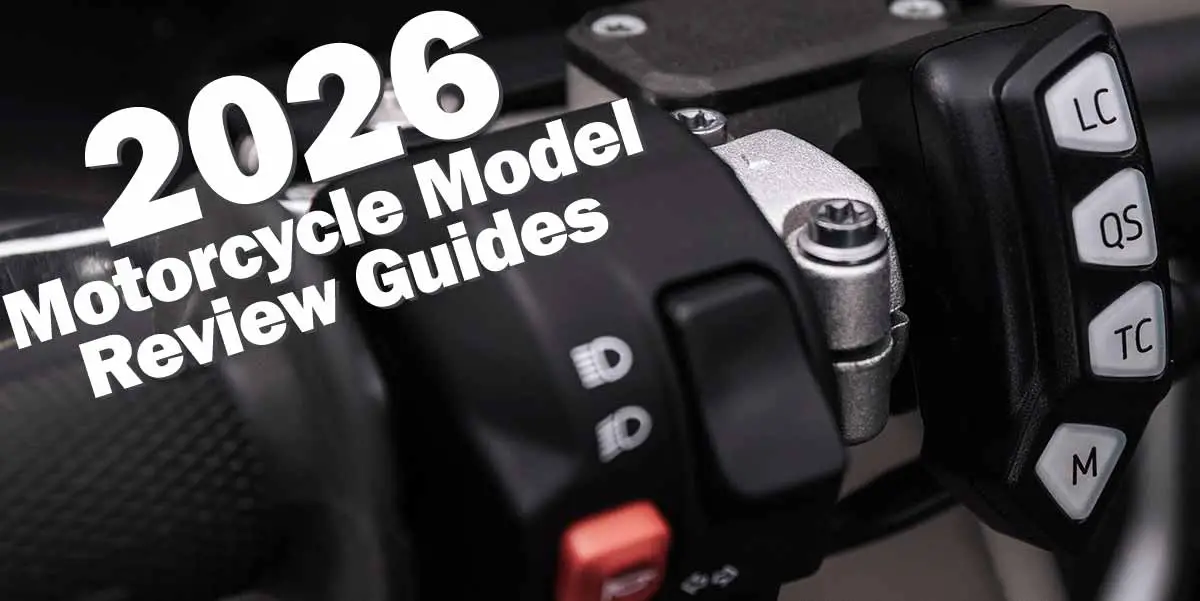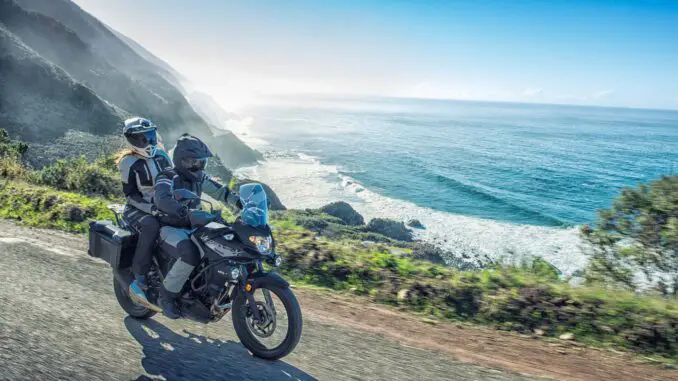
The 2026 Versys-X 300 ABS features a Ninja-derived 296cc twin-cylinder, DOHC, DFI engine, lightweight chassis, a low seat height, front cowling and tall windshield, and a convenient rear carrier.
Review – Key Features – Features & Benefits – Specifications
2026 Kawasaki Versys-X 300 ABS: RIDE IN COMFORT.
Introducing the 2026 Kawasaki Versys-X 300 ABS…
With a compact and responsive 296cc twin-cylinder engine, the Kawasaki Versys-X 300 ABS is a nimble-handling lightweight motorcycle that’s ready to take on any size adventure. Whether you’re commuting or touring, the Versys-X 300 ABS is a willing companion and your ticket to adventure. With a lightweight chassis and long-travel suspension, the possibilities are endless. The 2026 Versys-X 300 ABS features a Ninja-derived 296cc twin-cylinder, DOHC, DFI engine, lightweight chassis, a low seat height, front cowling and tall windshield, and a convenient rear carrier. It’s available in Metallic Phantom Silver/Metallic Flat Spark Black.
2026 Kawasaki Versys-X 300 ABS Totalmotorcycle.com Key Features
- NEW RIDER FRIENDLY
KAWASAKI ANNOUNCES FALL RELEASE OF 2026 STREET MOTORCYCLES
No matter what type of motorcycle you’re looking for, Kawasaki’s 2026 lineup has the model for you as it welcomes the return of several naked, retro, touring, adventure, cruiser, and EV models to its street motorcycle lineup. These 2026 model-year motorcycles are set to arrive in Kawasaki dealerships during the fall months so that riders can continue to “Let the Good Times Roll.”
2026 Kawasaki Versys-X 300 ABS Totalmotorcycle.com Features and Benefits
Engine Management Technology
Dual Throttle Valves
Late-model sport bikes often use large-bore throttle bodies to generate high levels of power. However, with large diameter throttles, when a rider suddenly opens the throttle, the unrestricted torque response can be strong. Dual throttle valve technology was designed to tame engine response while contributing to performance.
On models with dual throttle valves, there are two throttle valves per cylinder: in addition to the main valves, which are physically linked to the throttle grip and controlled by the rider, a second set of valves, opened and closed by the ECU, precisely regulates intake airflow to ensure a natural, linear response. With the air passing through the throttle bodies becoming smoother, combustion efficiency is improved and power is increased.
Economical Riding Indicator
Using high-precision electronic control for engine management, Kawasaki models can achieve a high level of fuel efficiency. However, fuel consumption is greatly affected by throttle use, gear selection, and other elements under the rider’s control. The Economical Riding Indicator is a function that indicates when current riding conditions are consuming a low amount of fuel. The system continuously monitors fuel consumption, regardless of vehicle speed, engine speed, throttle position and other riding conditions. When fuel consumption is low for a given speed (i.e. fuel efficiency is high), an “ECO” mark appears on the instrument panel’s LCD screen. By riding so that the “ECO” mark remains on, fuel consumption can be reduced.
While effective vehicle speed and engine speed may vary by model, paying attention to conditions that cause the “ECO” mark to appear can help riders improve their fuel efficiency – a handy way to increase cruising range. Further, keeping fuel consumption low also helps minimize negative impact on the environment.
KTRC (Kawasaki Traction Control)
KTRC, Kawasaki’s advanced traction control system provides both enhanced sport riding performance and the peace of mind to negotiate slippery surfaces with confidence. Multiple rider-selectable modes (the number of modes varies by model) offer progressively greater levels of intrusion to suit the riding situation and rider preference.
Less intrusive modes maintain optimum traction during cornering. Designed with sport riding in mind, they facilitate acceleration out of corners by maximizing forward drive from the rear wheel. And because Kawasaki’s sophisticated software bases its dynamic analysis on the chassis’ orientation relative to the track surface (rather than relative to a horizontal plane), it is able to take into account corner camber, gradient, etc., and adapt accordingly.
In the more intrusive modes (and for some models, in any mode), when excessive wheel spin is detected, engine output is reduced to allow grip to be regained, effectively enabling riders to negotiate both short, slippery patches (train tracks or manhole covers) and extended stretches of bad roads (wet pavement, cobblestone, gravel) with confidence.
Models equipped with IMU incorporate chassis-orientation feedback to offer even more precise management.
RIDEOLOGY THE APP MOTORCYCLE
Clever technology enables riders to connect to their motorcycle wirelessly. Using the smartphone application “RIDEOLOGY THE APP MOTORCYCLE,” a number of instrument functions can be accessed, contributing to an enhanced motorcycling experience. Vehicle information (such as the odometer, fuel gauge, maintenance schedule, etc.) can be viewed on the smartphone. Riding logs (varies by model, but may include GPS route, gear position, rpm, and other information) can be viewed on the smartphone. When connected, telephone (call, mail) notices are displayed on the instrument panel. Riders can also make changes to their motorcycle’s instrument display settings (preferred units, clock and date setting, etc.) via the smartphone. And on certain models, it is even possible to check and adjust vehicle settings (such as Rider Mode, electronic rider support features, and payload settings) using the smartphone. Smartphone connectivity with voice command is available.
Smartphone Connectivity
Clever technology enables riders to connect to their motorcycle wirelessly. Using the smartphone application “RIDEOLOGY THE APP,” a number of instrument functions can be accessed, contributing to an enhanced motorcycling experience. Vehicle information (such as the odometer, fuel gauge, maintenance schedule, etc) can be viewed on the smartphone. Riding logs (varies by model, but may include GPS route, gear position, rpm, and other information) can be viewed on the smartphone. When connected, telephone (call, mail) notices are displayed on the instrument panel. Riders can also make changes to their motorcycle’s instrument display settings (preferred units, clock and date setting, etc) via the smartphone. And on certain models, it is even possible to check and adjust vehicle settings (such as Rider Mode, electronic rider support features, and payload settings) using the smartphone.
Chassis Management Technology
ABS (Anti-lock Brake System)
Kawasaki ABS systems use front and rear wheel sensors to constantly monitor wheel speed. Should information from either of the sensors indicate that wheel lock has occurred, the ABS ECU directs the pump in the ABS unit to modulate brake fluid pressure (releasing and reapplying pressure so that traction can be regained) until normal operation resumes. ABS offers rider reassurance that contributes to greater riding enjoyment.
Assist & Slipper Clutch
Based on feedback from racing activities, the Assist & Slipper Clutch uses two types of cams (an assist cam and a slipper cam) to either drive the clutch hub and operating plate together or apart.
Under normal operation, the assist cam functions as a self-servo mechanism, pulling the clutch hub and operating plate together to compress the clutch plates. This allows the total clutch spring load to be reduced, resulting in a lighter clutch lever feel when operating the clutch.
When excessive engine braking occurs – as a result of quick downshifts (or an accidental downshift) – the slipper cam comes into play, forcing the clutch hub and operating plate apart. This relieves pressure on the clutch plates to reduce back-torque and helps prevent the rear tire from hopping and skidding. This race-style function is particularly useful when sport or track riding.
ERGO-FIT MOTORCYCLE
Proper fit is key for rider comfort and control. However, the ideal fit varies from rider to rider, depending on their physical dimensions and riding style.
ERGO-FIT is an interface system designed to allow riders to find their ideal riding position. Various points of the vehicle chassis can be adjusted through a combination of interchangeable parts and parts with adjustable positions. This enables a wide range of riders to find a riding position that offers both comfort and control. Feeling at one with their machine, they will be able to experience how Kawasaki machines are fun and rewarding to ride. *Adjustable parts and their range of adjustability vary by model.
2026 Kawasaki Versys-X 300 ABS – Totalmotorcycle.com USA Specifications/Technical Details
US MSRP Price: $5799 USD
Canada MSRP Price: $7249 CDN
Europe/UK MSRP Price: £ NA (On The Road inc 20% Vat)
POWER
| POWER | |
| Engine | 4-stroke, 2-cylinder, DOHC, liquid-cooled |
| Displacement | 296cc |
| Bore x Stroke | 62.0 x 49.0mm |
| Compression Ratio | 10.6:1 |
| Maximum Horsepower | 39.0 hp¹ @ 11,500 rpm |
| Maximum Torque | 19.2 lb-ft @ 10,000 rpm |
| Fuel System | DFI® with 32mm throttle bodies (2) |
| Ignition | TCBI with Digital Advance |
| Transmission | 6-speed, return shift with wet multi-disc manual clutch |
| Final Drive | Chain |
| Electronic Rider Aids | Economical Riding Indicator, Anti-lock Brake System (ABS) |
PERFORMANCE
| PERFORMANCE | |
| Front Suspension / Wheel Travel | 41mm telescopic fork/5.1 in |
| Rear Suspension / Wheel Travel | Uni-Trak® swingarm with 5-way spring preload adjustment/5.8 in |
| Front Tire | 100/90-19 |
| Rear Tire | 130/80-17 |
| Front Brakes | Single 290mm disc, ABS |
| Rear Brakes | Single 220mm disc, ABS |
DETAILS
| DETAILS | |
| Frame Type | Tubular, diamond |
| Rake/Trail | 24.3°/4.3 in |
| Overall Length | 85.4 in |
| Overall Width | 33.9 in |
| Overall Height | 54.7 in |
| Ground Clearance | 7.1 in |
| Seat Height | 32.1 in |
| Estimated Dry Weight | 350.6 lb** |
| Curb Weight | 385.9 lb* |
| Fuel Capacity | 4.5 gal |
| Wheelbase | 57.1 in |
| Special Features | ERGO-FIT® |
| Color Choices | Metallic Phantom Silver/Metallic Flat Spark Black |
*Curb weight includes all necessary materials and fluids to operate correctly, full tank of fuel (more than 90 percent capacity) and tool kit (if supplied). When equipped, California evaporative emissions equipment adds approximately 2.2 lb.
**Dry weight does not include all necessary materials and fluids to operate correctly, full tank of fuel (more than 90 percent capacity) and tool kit (if supplied).
¹This vehicle’s HP was measured according to ISO standard 4106. This ISO standard measures HP differently than the SAE standards by which the horsepower of many cars is measured, and as a result the referenced HP measurement may be higher than if it were measured by an SAE standard.
KAWASAKI CARES: Read Owner’s Manual and all on-product warnings. Always wear a helmet, eye protection and proper apparel. Never ride under the influence of drugs or alcohol. Adhere to the maintenance schedule in your Owner’s Manual. ©2025 Kawasaki Motors Corp., U.S.A.
Specifications subject to change
2026 Kawasaki Versys-X 300 ABS – Totalmotorcycle.com Canadian Specifications/Technical Details
| Power | 29 kW {39 PS} / 11,500 rpm |
| Torque | 26 Nm {2.7 kgfm} / 10,000 rpm |
| Engine | 296cc, liquid-cooled, 4-stroke, DOHC 8-valve parallel twin |
| Bore x Stroke | 62.0 x 49.0 mm |
| Compression Ratio | 10.6:1 |
| Fuel System | Fuel injection: ø32 mm x 2 with dual throttle valves |
| Ignition | Digital |
| Starting | Electric |
| Lubrication | Forced lubrication, wet sump |
| Transmission | 6-speed, return |
| Clutch | Wet multi-disc, manual |
| Final Drive | Chain |
PERFORMANCE
| Frame | Backbone, high-tensile steel |
| Front Suspension / Wheel Travel | ø41 mm telescopic fork / 130 mm (5.1 in) |
| Rear Suspension / Wheel Travel | Bottom-Link Uni Trak, gas-charged shock with adjustable spring preload / 148 mm (5.8 in) |
| Rake / Trail | 24.3° / 108 mm |
| Steering Angle (L/R) | 40° / 40° |
| Front Tire | 100/90-19M/C 57S |
| Rear Tire | 130/80-17M/C 65S |
| Front Brake | Single ø290 mm petal disc with balanced actuation dual-piston caliper |
| Rear Brake | ø220 mm petal disc with dual-piston caliper |
DETAILS
| Dimensions (L x W x H) | 2,170 x 860 x 1,390 mm (85.4 x 33.9 x 54.7 in) |
| Wheelbase | 1,450 mm (57.1 in) |
| Road Clearance | 180 mm (7.1 in) |
| Seat Height | 815 mm (32.1 in) |
| Curb Weight* | 175 kg (386 lb) |
| Estimated Dry Weight** | 159 kg (351 lb) |
| Fuel Capacity | 17 litres |
| Instrumentation | Analogue-style tachometer + LCD screen with digital speedometer, gear position indicator, odometer, dual trip meters, remaining range, current and average fuel consumption, external temperature, coolant temperature, clock and the Economical Riding Indicator |
| Warranty | 12 months |
| Kawasaki Protection Plus | 12 / 24 / 36 / 48 months |
*Curb weight includes all necessary materials and fluids to operate correctly, full tank of fuel (more than 90 percent capacity) and tool kit (if supplied).
**Estimated dry weight does not include all necessary materials and fluids to operate correctly, full tank of fuel (more than 90 percent capacity) and tool kit (if supplied).
KAWASAKI CARES: Always wear a helmet, eye protection, and proper apparel. Never ride under the influence of drugs or alcohol. Read Owner’s Manual and all on-product warnings. Professional rider shown on a closed course. 2020 Canadian Kawasaki Motors, Inc.
Specifications subject to change.
2026 Kawasaki Versys-X 300 ABS – Totalmotorcycle.com European Specifications/Technical Details
NA
Manufacturer Specifications and appearance are subject to change without prior notice on Total Motorcycle (TMW).


